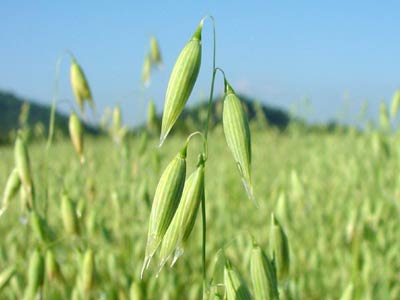Botanical Name: Mucuna Pruriens
English/Common Name: Velvet Bean, Cowhage, Cow-itch, Buffalo bean
Ayurvedic Name: Kaunch, Atmagupta, Kapikacchu
Family: Fabaceae
Part Used: Seeds / Fruits
Kapikachu (Mucuna Pruriens) enjoys an important place among aphrodisiac herbs in India since ancient times. Susruta mentions the use of the seeds as promoters of virility, as also Bhavamisra. It is categorized as visya – the substance that improves sexual vitality and functioning. Its use as an anthelmintic (capable of expelling or destroying parasitic worms) has also been mentioned in older books on traditional medicine. Yogaratnakara has a reference to its use in a formulation for tremors.
The literal meaning of the word kapikacchu is, one who scratches the body like a monkey. The surface of the pods of this climber is covered with bristles, which are allergic to the skin. On touching, it gives intensive itching sensation. Hence, aptly it has named as kapikacchu. It is also called as markati as the furred surface of its pods resembles to that of monkey’s skin.
Mucuna Pruriens is a common twiner, extensively distributed all over India, from the Himalayan foot hills and the plains of Punjab to Sri Lanka. It is a large half – woody twiner, with long slender cylindrical branches. The leaves are 15- 20 cm long, alternate, trifoliate, with ovate leaflets 7-12 cm long. The flowers large shortly stalked, in clusters and purple in color. The fruits, turgid pods, clothed with brown or grey irritant bristles. The seeds, 4-6 per pod, are black and ovoid or bean shaped, about 1 cm in diameter.
Traditionally, Mucuna Pruriens find use in number of diseases and is commonly used as carminative, hypotensive & hypoglycemic agent. From phytochemistry point of view, the drug contains L-dopa (which is very effective in the treatment of Parkinson’s disease), tryptamine alkaloids, lecithin and tannins. All these compounds are known to exist in the seeds. There were some reports that the same compounds are detected and can be extracted from its leaves and stem as well.
Mucuna Pruriens has been shown to increase testosterone levels, helps deposition of protein in the muscles and increase muscle mass and strength. The seeds, roots and the bristles on its pods have great medicinal value. It is the most commonly used ingredient in many tonics for impotency and for enhancing sexual vitality. It also works well as a restorative for conditions of debility and weakness. The extract is also known to enhance mental alertness and improve coordination.
The seed powders of kapikacchu impart very potent effect, when taken with sugar and followed by milk. It augments the seminal fluids, vitality and the vigor. The hot infusion of the seeds is an excellent panacea for premature ejaculation in men. The seeds are useful as a galactogouge in lactating mothers.
The roots of this plant are diuretic. The decoction of the roots is beneficial in renal problems and dysuria. The roots also help regulate the menstrual cycle. They are useful to enhance the sexual vigor in women. The root powder, for this purpose, mixed with sugar, ghee and honey works well. In vata diseases like facial palsy, cervical spondylosis, Parkinson’s disease, paralysis etc, the decoction of kapikacchu is rewarding.
Generally, this herb is used with amalaki, ashwagandha, shatavari, gokshura, white and black musali to make pills and jelly or gelatin capsules. The bristles of the pods, filled in gelatin capsules, are used with benefit in intestinal worm infestations, especially in round worms. The seed powder, combined with honey, is commonly used as a general tonic. In bronchial asthma, the seed powder, honey and ghee are an effective combination.
Its Ayurvedic applications include: indigestion, colic, debility, edema, impotence, infertility, leukorrhea, menorrhagia, roundworm, spermatorrhea, Parkinsons, roots-fever, edema, elephantiasis (externally), and nervous disorders (including facial paralysis).
Regarding toxicity, its adverse effects were mild and were mainly gastro-intestinal in nature. No adverse effects were seen in clinical laboratory reports.













